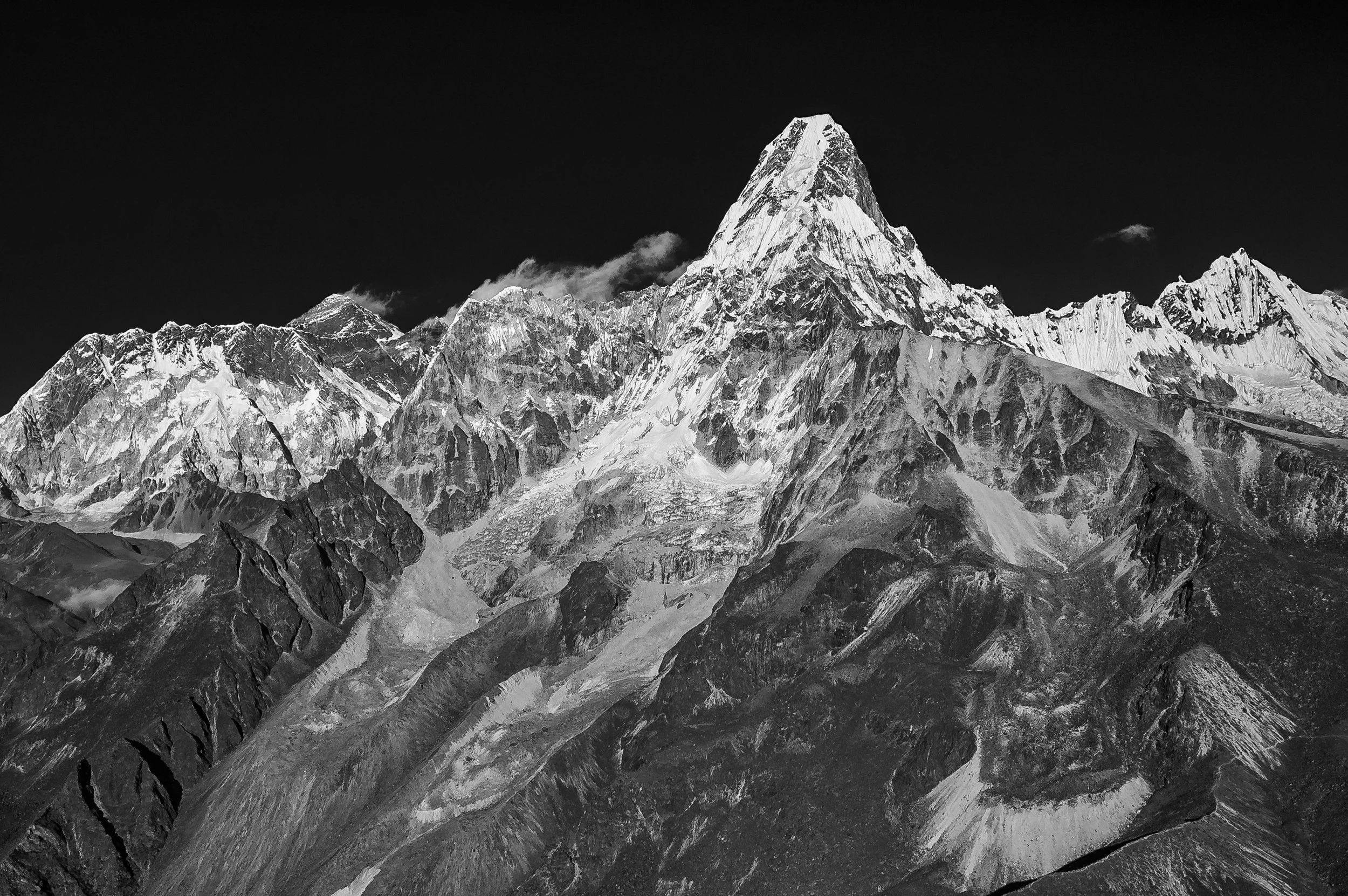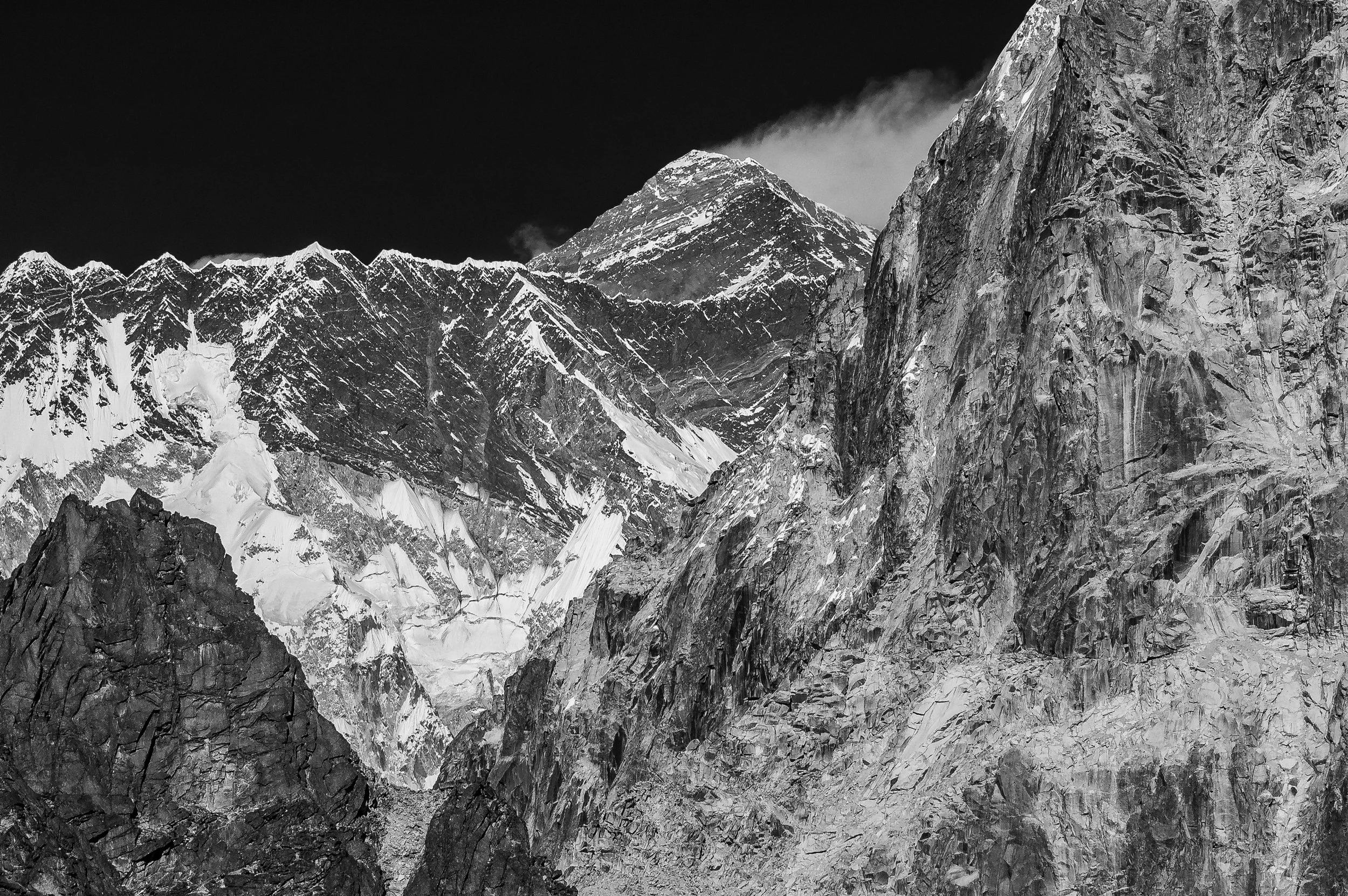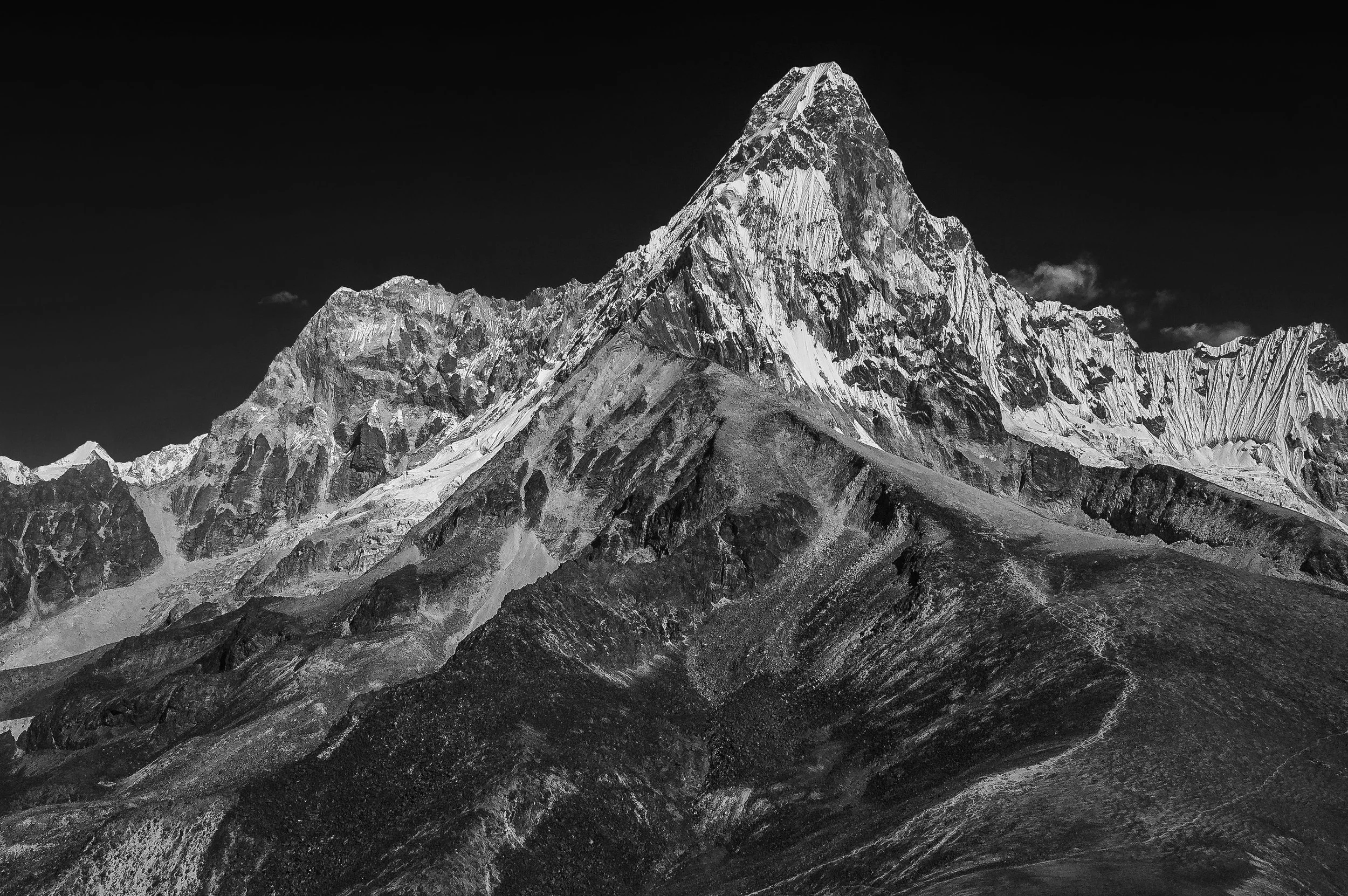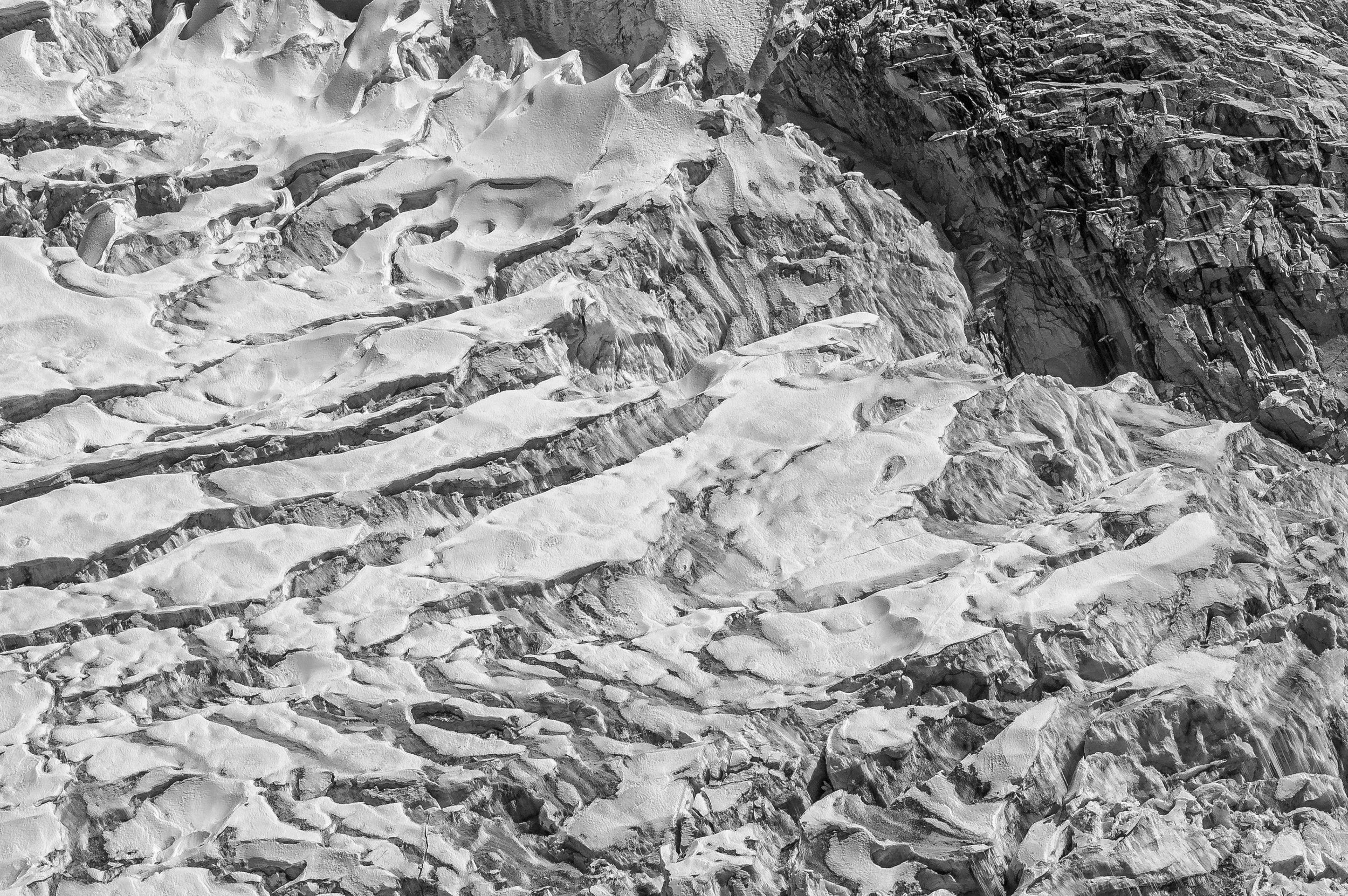
Until We Act, the Mountains Will Keep Changing
Nepal’s Himalayas deserve to be remembered before they disappear.
The Vision
Not just photographs. A cultural and environmental archive for generations.
For more than two decades, photographer and producer Gautam Dhimal has been documenting the Himalayas. Now, with the Gehendra Dhimal Foundation and Location Nepal as partners, this three-year mission will capture every major Himalayan range, every glacier, and every fragile water source in ultra high-resolution stills and cinematic films. This will be the most complete visual record of the Himalayas ever attempted.
Why It Matters
Glaciers are melting faster than ever, threatening billions who depend on Himalayan water.
Snowlines are retreating and landscapes are changing within a single generation.
Without action, the chance to preserve these mountains in their truest form will be lost forever.
The Mission
Over three years, our team will embark on more than 300 helicopter flight hours and ground expeditions across Nepal’s Himalayas. From Everest to Annapurna, Kanchenjunga to Dolpo, we will document glacial retreat, fragile ecosystems, and breathtaking landscapes. Using medium format ultra high-resolution camera systems and world-class cinematography, we will create a permanent archive to educate, inspire, and mobilize global audiences.
What We Will Deliver
Grand Exhibition in Kathmandu: Monumental prints, immersive design, global media attention.
Fine Art Book: Published worldwide as a lasting record.
Cinematic Highlight Film: A behind-the-scenes story for international audiences and platforms.
Legacy Archive: A permanent cultural and environmental record for future generations.
Impact and outcomes
Monumental prints for exhibition and scientific reference.
A cinematic highlight film and short documentary content for global platforms.
A large format book for international distribution.
A permanent digital archive for educators, scientists and policy makers.
A turnkey template that donors and partners can replicate in other mountain regions.
Why now
The Himalayas are changing faster than ever. Glaciers retreat, lakes expand, and water systems shift in ways that affect millions downstream. This archive is evidence and urgency. If we do not record these landscapes now, the chance will be gone.
Partnership Opportunities
Donors and Foundations
Support the core project budget and receive high level recognition, bespoke content rights for impact campaigns, and invitation to the Kathmandu exhibition. Suggested ask level example for lead donor outreach: contribution toward the full project or programmatic pillars.
Public Broadcasters and Streamers
Commission exclusive documentary content, access for research, co branding, early screening rights and impact distribution packages.
Equipment and Imaging Partners
Provide technical systems or production support in exchange for co branded content and technical case studies.
Helicopter and Logistics Partners
Offer flight hours, local base support, long range lift or preferred charter terms in exchange for sponsorship credit and preferred brand exposure in exhibitions and films.
Scientific and Research Partners
Receive full archive access for climate research and co produce educational modules and policy briefs.
Corporate Sponsors
Get tailored visibility, hospitality at the Kathmandu exhibition, bespoke branded content and staff engagement programs.
Production and Stewardship
Lead Custodian
Gehendra Dhimal Foundation will receive and steward all funding and will manage accountability, reporting and archive ownership.
Project Director
Gautam Dhimal will lead creative direction, production oversight and the photography program.
Production Partner
Location Nepal will manage permits, line production, helicopter coordination and on ground safety.


Gautam Dhimal, Gehendra Dhimal Foundation, Location Nepal, Until We Act, The Vanishing Himalayas, Himalayan aerial photography, helicopter aerial photography Nepal, open door helicopter photography, high altitude photography Nepal, climate change Himalayas, glacial retreat Himalayas, black and white fine art Himalaya, aerial cinematography Himalayas, environment photography Nepal, fine art landscape photography, global climate awareness project, documentary photography Himalayas, visual archive Himalayas, climate storytelling project, glacial lake outburst floods, Himalayan water crisis, snowline retreat documentation, mountain conservation, aerial documentary film, mountain ecosystem research, Himalayan climate adaptation, Himalayan climate action, glacier documentation, Himalayan expedition photography, adventure aerial photography, Nepal helicopter photography, climate archive Nepal, Nepal environment documentation, global warming Himalayas, aerial environmental documentation, Himalayan environmental record, mountain culture preservation, high mountain resilience, aerial environmental photo project, aerial filmmaker Nepal, photographic evidence of glacial retreat, aerial view of Everest, sustainable mountain development, cryosphere awareness campaign, climate change documentation project, aerial photo archive Himalayas, fine art aerial prints Himalayas, Himalayan aerial visual legacy, environmental storytelling Nepal, climate and conservation Nepal
Everest, Sagarmatha, Khumbu, Lhotse, Nuptse, Ama Dablam, Pumori, Cho Oyu, Makalu, Kanchenjunga, Annapurna, Dhaulagiri, Manaslu, Langtang Lirung, Shishapangma, Gyachung Kang, Himalchuli, Api, Saipal, Kang Guru, Machhapuchhre, Thamserku, Gaurishankar, Melungtse, Ganesh Himal, Rolwaling Himal, Barun Valley, Imja Glacier, Khumbu Glacier, Ngozumpa Glacier, Thulagi Glacier, Langtang Glacier, Kanchenjunga Glacier, Tsho Rolpa Lake, Imja Tsho Lake, Gokyo Lakes, Rara Lake, Phoksundo Lake, Tilicho Lake, Tso Moriri, Mansarovar, Yamdrok Tso, Pangong Tso, Phewa Lake, Gosainkunda Lake, Tsho Rolpa, Hongu Valley, Dudh Koshi Valley, Arun Valley, Barun Glacier, Yalung Glacier, Seti River Basin, Kali Gandaki, Marsyangdi Valley, Mustang, Upper Mustang, Lower Mustang, Manang, Dolpo, Shey Phoksundo, Mugu, Jumla, Rasuwa, Solukhumbu, Taplejung, Sankhuwasabha, Lamjung, Myagdi, Baglung, Kaski, Sindhupalchok, Ramechhap, Dolakha, Gorkha, Dhading, Okhaldhunga, Bhojpur, Bajhang, Bajura, Darchula, Baitadi, Taplejung, Ilam, Panchthar, Sankhuwasabha, Terhathum, Bhojpur, Khotang
Ladakh, Zanskar Valley, Nubra Valley, Pangong Lake, Tso Kar, Leh, Kargil, Srinagar, Kashmir, Himachal Pradesh, Spiti Valley, Lahaul, Kinnaur, Uttarakhand, Nanda Devi, Kedarnath, Badrinath, Gangotri Glacier, Yamunotri Glacier, Sikkim Himalaya, Khangchendzonga National Park, Bhutan Himalaya, Paro Valley, Thimphu, Punakha, Phobjikha Valley, Wangdue Phodrang, Tibet Himalaya, Mount Kailash, Namtso Lake, Shigatse, Lhasa, Gyantse, Yarlung Tsangpo, Nagqu, Nyingchi, Hengduan Mountains, Karakoram Range, Baltoro Glacier, Biafo Glacier, Trango Towers, K2, Gasherbrum, Hunza Valley, Gilgit Baltistan, Skardu
Himalayan biodiversity, climate research Nepal, cryosphere change monitoring, mountain communities adaptation, sustainable mountain livelihoods, high mountain ecosystems, fragile mountain environments, glacier lake outburst flood Nepal, ICIMOD Himalayan research, Himalaya disaster risk reduction, environmental education Himalayas, snowline monitoring, aerial mapping Himalayas, satellite imagery validation Himalayas, photo evidence of glacier retreat, environmental art Nepal, climate photo exhibition Nepal, Himalaya fine art photography prints, global climate conservation awareness, mountain storytelling, cultural preservation Himalayas, aerial photo documentary Himalayas, cinematic environmental photography, aerial storytelling project Nepal, visual activism Himalayas, environmental photography grant, climate collaboration Himalayas, environmental journalism Nepal, global climate action Himalayas, 2030 climate goals Himalayas, environmental photography awards
FAQ: Until We Act
A Global Visual Record of the Himalayas
What is Until We Act?
Until We Act is a long-term visual and environmental documentation project led by photographer and producer Gautam Dhimal. The mission is to create the most complete archive of the Himalayas ever captured, combining aerial photography, cinematic film, and environmental storytelling.
Why focus on the Himalayas?
The Himalayas are the water source for more than a billion people across Asia. Glaciers here are melting at an unprecedented rate, creating a chain reaction that affects rivers, agriculture, and climate systems worldwide. This project captures that transformation before it disappears.
What makes this project unique?
Every image is captured from open-door helicopter missions and high-altitude expeditions using medium-format, ultra-high-resolution camera systems. The approach blends precision, artistry, and science to create a visual record of the Earth’s highest peaks as they stand today.
How does aerial photography help environmental awareness?
Aerial imagery offers perspective that ground photography cannot. It reveals patterns of glacial retreat, changing snowlines, and the scale of environmental change in a single frame. Each image becomes evidence, art, and awareness combined.
Who is behind Until We Act?
The project is directed by Gautam Dhimal, produced in partnership with the Gehendra Dhimal Foundation, and supported logistically by Location Nepal. Together, they unite art, science, and production excellence to document what humanity is losing.
How will the project make an impact?
The archive will fuel exhibitions, films, publications, and educational content that inspire conservation, policy change, and global dialogue. It aims to connect people emotionally to climate reality and motivate collective action.
How can global partners and donors participate?
Brands, institutions, and donors can collaborate through sponsorships, equipment partnerships, and funding for helicopter missions, production, or exhibitions. Every partnership helps extend the documentation and outreach of this mission.
What is the long-term vision?
Phase One focuses on Nepal’s Himalayan ranges. Future phases will expand to the full arc of the Himalayas, connecting Afghanistan, India, Nepal, Bhutan, Tibet, and Pakistan. The ultimate goal is to build a unified visual climate archive of the entire Himalayan range.
Why is this important now?
Glaciers are retreating faster each year. Lakes are expanding and water patterns shifting. What we see now may not exist in a decade. Documenting these changes is both a scientific necessity and a cultural responsibility.
How can I stay connected or support?
Send an email to mail@gautamdhimal.com to collaborate, sponsor, or feature the project.
Get Involved
This is our chance to preserve the Himalayas in memory, in record, in legacy. Join us in making history.
Become a Partner
Send Email to:





